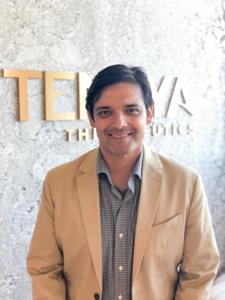Treating Heart Disease With Gene Therapy

By Tyler Menichiello, Chief Editor, Bioprocess Online

Several months ago, at ARM’s 2023 Meeting On The Mesa, I sat down with Faraz Ali, CEO of Tenaya Therapeutics. At the time, Tenaya had just dosed its first patient with TN-201, an AAV-based gene therapy for Myosin Binding Protein C3 (MYBPC3)-associated hypertrophic cardiomyopathy (HCM). MYBPC3 mutations are one of the leading genetic causes of HCM. According to Ali, TN-201 is the first gene therapy aimed at treating HCM, designed to deliver a working copy of MYBPC3 to heart muscle cells. “We’re taking the idea of precision medicine that has worked in oncology for 20 years and finally applying it to the leading cause of death in the world,” he tells me.
I spoke with Ali about this milestone and the challenges Tenaya faced leading up to this first successful dosing of TN-201. He shared some lessons he’s learned throughout his career, as well as what he’s most excited to see in the field heading into 2024.
Delivering Gene Therapies To The Heart
Ali says one of Tenaya’s earliest challenges was finding the right target to go after to treat heart disease. “When the company was founded in 2016, we didn’t have MYBPC3 on the list of things to do,” he says. “The question was, how do we build a company around something that has a reasonably high probability of success?” He says his team systematically went through more than 400 genes, looking at relative size (what can reasonably fit inside a delivery capsid), association with disease, patient population size, and the degree of unmet need.

To achieve this targeted, broad distribution to the heart, Ali says, AAV9 was a natural choice. “LNPs and non-viral delivery techniques are in their infancy, and frankly, they’ve only really been shown to be effective in vivo in the liver, which is where they naturally go,” he says. “AAVs are proven workhorses, and AAV9 in particular, was the right capsid for TN-201. It’s the most validated from a safety perspective, as well as in terms of efficacy and distribution to the heart.”
While identifying the appropriate target and delivery method were big pieces of the puzzle, another challenge remained: fitting a working copy of MYBPC3 into an AAV. “One of the challenges in this particular program was the size of the gene,” Ali explains. “Heart genes are big, and many don’t efficiently fit into the 4.7 KB carrying capacity of an AAV. We learned early on that throwing new capsids at it wasn’t going to solve the problem. In order to make this work, we actually had to tinker with the regulatory elements.” The team’s molecular tinkering allowed them to design a novel promoter that retained cardiac specificity and was able to fit inside the AAV.
If all goes well, Ali says, Tenaya expects to report interim data from its Phase 1b study of TN-201 in MYBPC3 in the second half of 2024.
Internalizing GMP Capabilities
A big early decision for Tenaya was to internalize non-GMP and eventually GMP capabilities. Ali says this decision was based on his past experience. “I was at a company that experienced a manufacturing crisis in its main GMP facility that led to a shortage of drug for two rare disease programs, of which it had the only approved therapies in the U.S.,” he says. “I saw patients suffer from the company not being able to provide that drug, and it brought home fast the importance of manufacturing in general.”
Having internal manufacturing capabilities allows more control over product quality, process changes, timelines, and costs. “We knew that we were going to be developing novel promoters and novel capsids, and every time you mess with the capsid design or design something new, you have to think about manufacturability,” Ali explains. “We didn’t want to leave it to a CDMO to help figure it out.” Of course, internalizing GMP doesn’t come down to just having all the necessary assays and bioreactors. He says it also requires hiring people with the technical ability to develop analytical assays and operate these systems. Deciding to bring manufacturing in-house through the early stages of process development allowed Ali’s team to grow their own process from the 50-liter scale all the way up to the 1,000-liter commercial scale.
The Field Needs Continued Success In 2024
Ali believes the field is hitting its stride. “We went from a period of five gene therapy approvals in five years to now potentially five this year alone,” he says excitedly. “Just today I was on stage talking about how clinical development success rates are higher for cell and gene therapies versus other modalities.”
In 2024, Ali is looking forward to building on the industry’s success in 2023 and seeing more approvals in areas of unmet need. “In 2024, I want more approvals for other indications, and I would love to see the uptake of these therapies that have gotten approval,” he says. “I think the field needs to see that success; that we can not only develop and manufacture these therapies and get approvals, but that we can also ensure market access for patients.”
